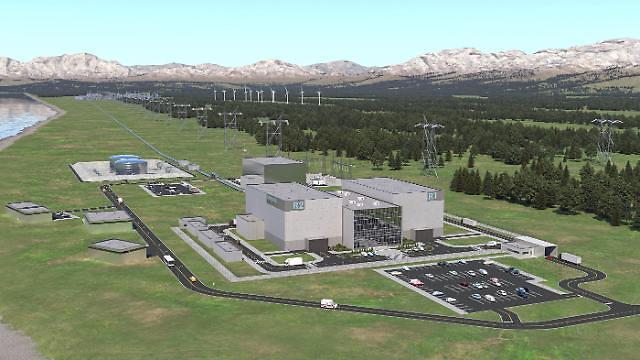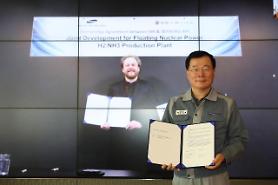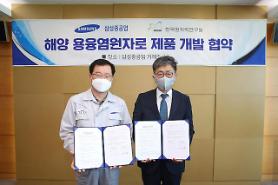
[Courtesy of DL E&C]
DL E&C said it has signed a memorandum of understanding with Terrestrial Energy on the development of small modular reactors as and an engineering, procurement, and construction business. The builder would foster SMR as one of its new growth engines and link SMR to the production of green hydrogen and ammonia.
"We look forward to entering the global small module nuclear power plant market including North America through partnership with Terrestrial Energy, a leader in next-generation nuclear technology," said DL E&C's plant business head Yoo Jae-ho. "We will also push for the development of decoke energy sources in connection with a hydrogen and ammonia value chain."
DL E&C has built plants for the production of reformed and by-product hydrogen at home and abroad. The company is carrying out a Saudi Arabian project to build a plant capable of producing ammonia through natural gas.
Molten salt reactors (MSRs) are a class of small modular reactors (SMRs) that have been studied to address the limitations of traditional light-water reactors. MSRs can reduce expensive containment structures and eliminate hydrogen as a source of explosion risk and do not produce dangerous and radioactive fission gases that are under pressure.
IMSR employs MSR technology and integrates into a compact, sealed and replaceable nuclear reactor unit called "Core-unit," which comes in a single size designed to deliver 400 megawatts of thermal heat.
There has been a rush from South Korean companies to forge partnerships with foreign SMR companies since President Yoon Suk-yeol pledged full support for the introduction of SMRs, which have been studied to address the limitations of traditional light-water reactors using low-enriched uranium that cost a lot to replace nuclear fuel and require a vast emergency evacuation zone, nonproliferation and waste management.
In June 2021, Samsung Heavy Industries (SHI), a major shipbuilder in South Korea, joined hands with the state-run Korea Atomic Energy Research Institute (KAERI) to develop a small carbon-free fission reactor based on molten salt that would be used for ships and floating nuclear power plants.
Seaborg Technologies, a private Danish startup, partnered with SHI in April 2022 to develop a floating power generation facility using a compact molten salt reactor (CMSR) which is relatively safe by using fuel mixed in a liquid salt whose boiling point is far above temperatures produced by fission products.
Solid fuel rods used in conventional reactors need constant cooling with water under high pressure. The low boiling point of water creates a potential point of failure. Instead of graphite as a moderator, CMSR uses molten sodium hydroxide contained in pipes, enabling a more compact design. It also allows the liquid moderator to be rapidly removed from the core. The final goal is to develop hydrogen and ammonia production facilities using electricity produced by floating power generation facilities.
Copyright ⓒ Aju Press All rights reserved.



